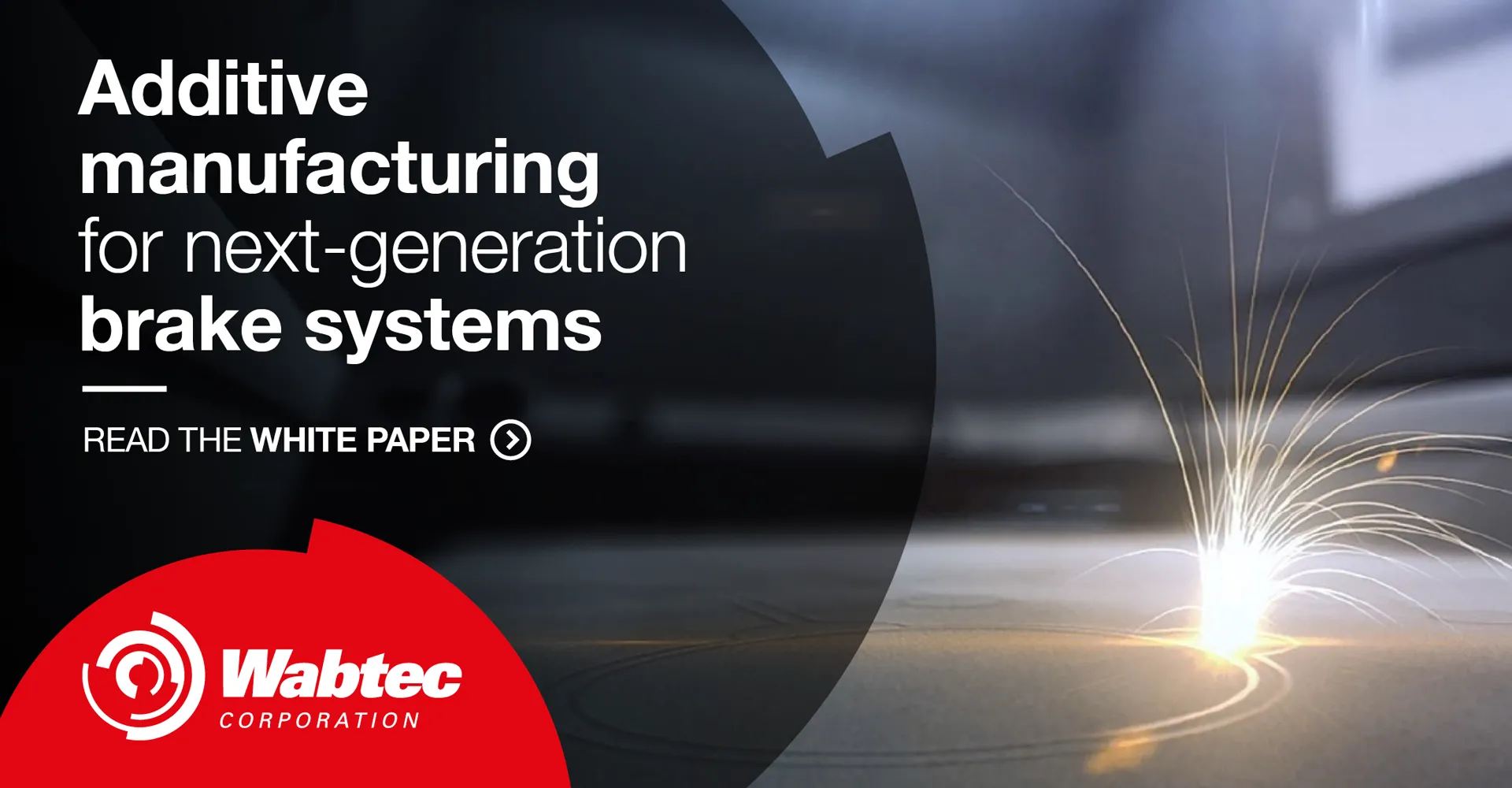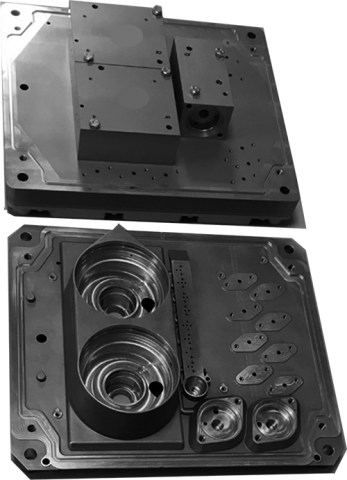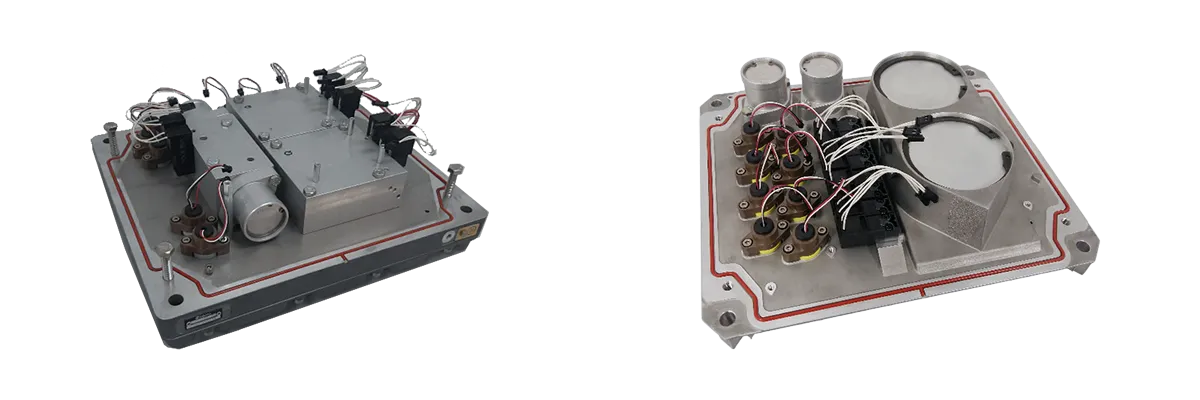Light and efficient: the added benefits of additive manufacturing
When it comes to the braking systems used on trains, safety, reliability, and performance are always the number one priority. In these domains, Wabtec leads the way with our Metroflexx and Regioflexx brake solutions. Metroflexx sets the standard for the mass transit rail industry, while Regioflexx is our latest-generation solution for suburban, intercity, regional, and high-speed trains.
As well as being as safe as it gets, both systems are also among the lightest and most efficient on the market, which brings significant benefits for train operators. Our engineers achieve this through two major design and manufacturing features: the use of software instead of pneumatic components, and additive manufacturing. By leveraging these innovative modern solutions, we boost the reliability and performance of both brake products, while lowering maintenance and installation time and costs, and creating multiple efficiencies.
An innovative approach to brake design and manufacturing
When developing Metroflexx and Regioflexx, Wabtec made a major leap forward by replacing some pneumatic components that perform safety-critical functions within brake systems with software emulation at the same safety level. The benefit of this is clear: a component that is not actually a physical product generates no costs beyond development and validation, carries no weight, creates no installation constraints, and requires no maintenance. While pneumatic components require project-specific settings, once replaced by emulation software, settings are replaced by software parameters that only need to be fixed once for the project.
This change is innovative, and Wabtec could have stopped there, but we decided to go even further. We chose to explore the use of additive manufacturing for the remaining pneumatic parts in order to reduce weight and make our products even more advantageous for customers.
When additive manufacturing is added to the mix
Pneumatic components are traditionally made of aluminum, either machined in aluminum billet or, when manufacturing volumes permit, casted. Each component is either flanged on a drilled or bonded panel or pipe mounted, and each interface between a pneumatic component and its support requires fasteners and seals for tightness. While this system ensures components can be dismounted easily for maintenance, the use of extra pieces comes at a price: seals at every interface need to be replaced during brake system overhaul and can be prone to leaking. This means increased maintenance costs and degraded reliability, and also additional weight.
When Wabtec was developing Metroflexx and Regioflexx, additive manufacturing technology was already revolutionizing a number of industries, including railways. While our engineers had already minimized the number of pneumatic components used in Metroflexx and Regioflexx, we also wanted to take full advantage of this new technology to push physical integration even further and minimize the number of pneumatic interfaces required.
Improvement in all areas
The top image in figure 1, below, shows the Metroflexx main plate initial design with casted aluminum and key pneumatic components flanged on the plate, with seals at every pneumatic interface, plus screws. The bottom image shows the design of the same Metroflexx plate with additive manufacturing design.
Figure 1: The initial Metroflexx version with casted plate, and the 3D printed version
Additive technology brings multiple benefits: to the product itself, to how it is produced, and across its full life cycle.
Physical integration
- The body of key pneumatic components is fully integrated into the plate body, limiting the number of pneumatic and mechanical interfaces. In addition, the number of seals is greatly reduced, thus improving reliability and reducing maintenance costs.
- Internal piping is greatly optimized, improving pneumatic performance. Component placement on the plate can also be optimized, without machining constraints, making maintenance easier.
- The 3D printed version of Metroflexx merges no fewer than 32 separate parts into a single component.
Weight improvement
In traditional brake control equipment with an electronic rack, a pneumatic brake panel and wheel slide protection valves, the brake control weighs around 70kg.
Metroflexx, which replaces traditional brake control equipment, weighs 15kg in the initial design with a casted aluminum plate. When produced with an additive manufacturing plate, Metroflexx’s weight drops to 10kg, representing a 33% weight improvement. The 5kg difference does not have a major impact on train payload, but makes a huge difference in terms of maintenance. As a line replaceable unit (LRU), at 10kg, Metroflexx (or Regioflexx) can be replaced on train by a single operator in less than 20 minutes without any special tools, meaning that repair or overhaul can be done in a specialized workshop without affecting train availability. At 10kg, Metroflexx and Regioflexx are by far the lightest integrated brake controls available on the market.
Processing
Machining time is reduced by 80%, and the energy needed to produce the part is divided by four. Our supply chain becomes more flexible as we no longer depend on casting suppliers. This results in less need for transportation and the ability to order quantities as required, with no minimum requirement.
Design evolution
The design is fully flexible, so modifications can be performed as required simply by changing the associated digital model, thereby eliminating costs related to tooling modifications.
Figure 2: The initial Metroflexx version with casted plate, and the 3D printed version
Exhaustive testing to guarantee safety
When it comes to safety-critical equipment like braking systems, Wabtec takes testing and validation of our innovations very seriously. Additive manufacturing is no exception. Our products have undergone the most rigorous tests to validate their key safety features.
- We examined how to ensure pneumatic channels stay clean and pollution-free, specifically in piping and components.
- Our laboratories performed high-pressure hydraulic and fatigue tests to ensure product robustness under pressure.
- Products were subjected to shocks and vibrations to ensure they could withstand a real-life train environment.
- We conducted environment tests, which included exposing the products to extreme temperatures and salt spray.
This extensive validation program allowed us to be fully confident that this technology could guarantee the same level of safety and durability as traditionally manufactured pneumatic systems and components.
Additive manufacturing: layer upon layer of benefits
The advantages offered by the use of additive manufacturing are myriad and cannot be overstated. This technology not only reduces the weight of parts produced, it also enables product-function integration that limits the need for equipment maintenance. It shortens manufacturing times and lead times for spare parts, while also lightening up the supply chain. These benefits, which are advantageous for train operators, are also good for the environment as they make the manufacturing process much greener by significantly reducing energy consumption.
Moving forward, Wabtec recently decided to build a European additive manufacturing center in Tours, France. The site has capabilities to manufacture polymer and metal parts, and offers services for the entire value chain, from design consultancy, proof of concept execution, and support for validation and certification, to 3D printing and post process (machining, painting, surface treatment…).
We are committed to unleashing the potential of this game-changing technology to create ever more reliable and efficient braking systems that help speed the rail transportation industry towards a safer and greener future.


